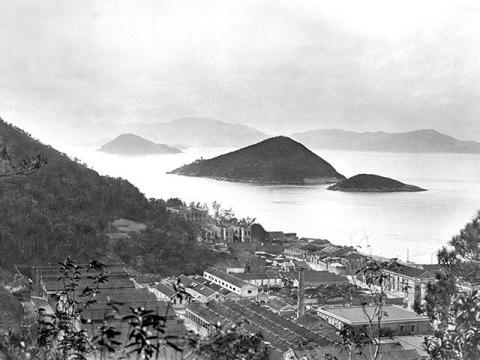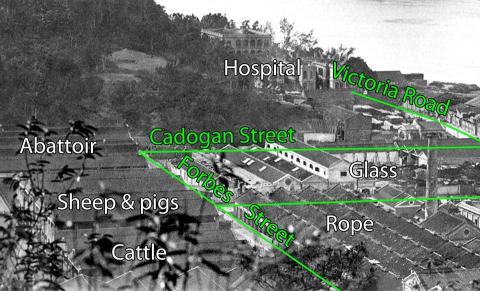The third Gwulo book begins like this ...
Introduction
Have you noticed how so many old Hong Kong photos have a harbour-related theme?
The harbour is still important today, but it had a much greater impact on the people shown here, living in Hong Kong in the early 20th century.
Today, almost all international visitors fly into the airport, but back then you sailed into the harbour. Today we shuttle between Hong Kong Island and Kowloon through one of the several tunnels. Then, you crossed the harbour by boat.
Hong Kong’s international trade happened right in front of you, along the shores of the island and Kowloon, not out of sight in a distant container terminal. The harbour even kept you cool – in those days before air-conditioning, one of the few times you felt really cool during Hong Kong’s long summer was when you jumped in the sea for a swim.
Finally, for tens of thousands of Hong Kong’s residents, the harbour was home. They lived on the countless junks and sampans dotted around Hong Kong’s bays and typhoon shelters.
So in this third volume, we’ll look at the harbour through the eyes of these different groups of people, and see what stories they have to tell us.
We’ll start with tourists. They’d have arrived by ship, so what did they see as they first sailed into Hong Kong’s harbour?
Photo (1): Sulphur Channel
Our first photo comes from a small, commercially-produced album that was sold to tourists in the 1920s. It has a printed description:
"This photograph, taken from the recreation ground of Hongkong University, gives a glimpse of the beautiful western entrance to Hongkong’s famous harbour. Most of the big passenger ships to and from the South sail via this deep and narrow passage which separates Green Island from Hongkong, while vessels to and from the North use the more magnificent eastern channel, Lyeemun Pass. The buildings seen in the foreground here are at the extreme West of Victoria City."
Green Island is the conical island roughly in the centre of this photo. We can just make out the shape of its lighthouse on the left, at the entrance to the ‘deep and narrow passage’ known as Sulphur Channel. The buildings in the foreground are in Kennedy Town, though the district doesn’t get a mention in the 1920s write-up.
Kennedy Town wasn’t considered worthy of a mention as it wasn’t on any of the tourist trails – but what would tourists have seen if they’d visited 1920s Kennedy Town?
"Ladies and gentlemen, as you descend from the motor carriage, please step carefully, as you are in the middle of an industrial district. Directly ahead is the glassworks, while on our left is the rope factory.
The animal noises? Don't be alarmed, Madam! That’s just the nearby abattoir. You may have also noticed a certain aroma in the air. That’ll be from the sheep and pig depot next door, or possibly from the cattle sheds on Smithfield Road.
Not a place for deep breaths? Quite right, Sir, especially as we’re only a cough and a sneeze away from Hong Kong’s infectious diseases hospital."
Hmmm, maybe there was good reason that few tourists visited!
We’ll let our visitors sail on by in blissful ignorance, then catch up with them again when their ship moors off Central.
Further reading:
- View more sample chapters:
- Photo (1): Sulphur Channel
- Photo (2): Central and the Peak, c. 1906
- Photo (21): Kowloon City Pier
- Photo (22): Farewell!
- Or buy the book.


